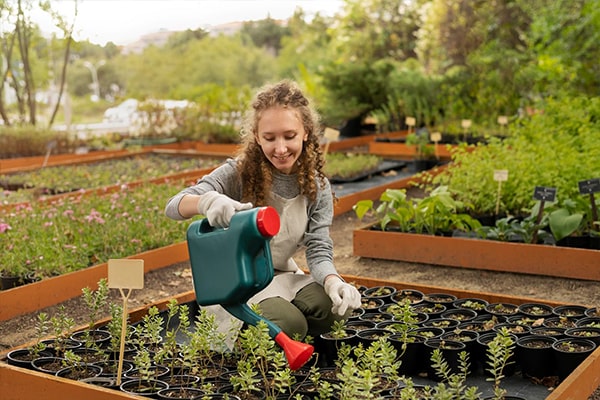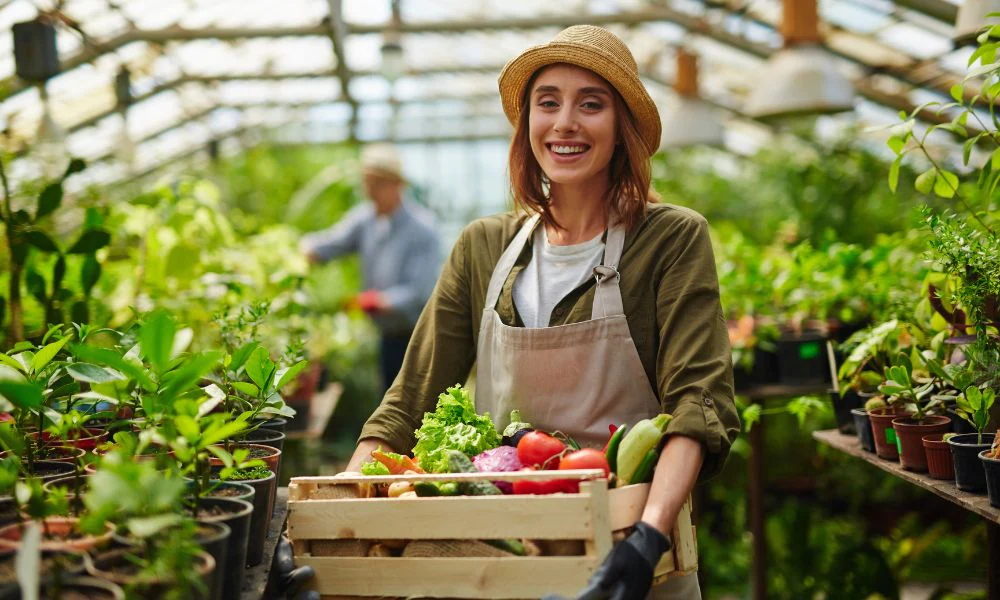As we move into 2024, gardening is no longer just about aesthetics but also about functionality, sustainability, and maximizing small spaces. Two major trends leading the way this year are edible landscapes and vertical gardens. These innovative gardening styles not only enhance your outdoor space but also provide practical solutions for growing your own food, even in limited areas. Let’s explore these top gardening trends for 2024, and how you can integrate them into your home.
What are Edible Landscapes?
Edible landscapes, also known as foodscaping, are the harmonious blend of ornamental gardening and food production. Instead of separating a vegetable garden from flower beds, you can mix edible plants like fruits, vegetables, herbs, and even edible flowers within your decorative landscaping. This approach creates a dual-purpose garden that is both visually appealing and practical.
Benefits of Edible Landscapes
Edible landscapes offer multiple advantages:
- Maximized Garden Use: Why dedicate space purely for aesthetics when you can enjoy the beauty of a garden while also reaping the benefits of fresh produce?
- Sustainability: Growing your own food reduces your carbon footprint, minimizes food waste, and encourages sustainable living.
- Biodiversity: By integrating different types of plants, you create a diverse ecosystem that can naturally deter pests and support pollinators like bees and butterflies.
- Cost Savings: Over time, growing your own food can lead to significant savings on grocery bills, particularly if you choose high-yield crops such as tomatoes, lettuce, or herbs.

How to Create an Edible Landscape in 2024
- Choose Complementary Plants: Select a mix of edible plants that also have visual appeal. For example, kale, Swiss chard, and lettuce come in various colors and textures that blend well with ornamental plants.
- Add Edible Flowers: Plants like nasturtiums, marigolds, and pansies are not only beautiful but edible as well, making them great additions to an edible landscape.
- Plan for All Seasons: Ensure your landscape remains lush year-round by planting a variety of crops that thrive in different seasons.
What are Vertical Gardens?
Vertical gardening is a technique that allows you to grow plants upward rather than outward. Ideal for urban spaces or homes with limited yard space, vertical gardens help you make the most of small areas like balconies, patios, or even indoor walls. This gardening trend has gained massive popularity for its ability to incorporate greenery into tight spaces without compromising on style or utility.
Benefits of Vertical Gardens
Vertical gardens are perfect for urban dwellers and those looking to maximize their gardening space. Here are some key advantages:
- Space Efficiency: Vertical gardens allow you to grow more plants in a smaller footprint, making them ideal for apartment balconies or small backyards.
- Better Air Quality: By incorporating more greenery into your living space, vertical gardens help purify the air, reduce pollutants, and improve indoor air quality.
- Water Efficiency: Vertical gardens often use innovative irrigation systems that reduce water waste. These systems can recycle water, making them more eco-friendly than traditional gardening methods.
- Aesthetic Appeal: Vertical gardens create stunning living walls that can transform a dull fence, patio, or balcony into a vibrant and green space.
How to Create a Vertical Garden in 2024
- Use Modular Systems: Look for stackable, modular planters that can be attached to walls or hung from railings. These systems make it easy to add or remove plants as needed.
- Choose Compact Plants: Herbs like basil, mint, and oregano or small vegetables like peppers and cherry tomatoes work great in vertical gardens due to their compact nature.
- Incorporate Automatic Irrigation: Consider using a drip irrigation system to ensure your plants get the water they need without overwatering, a common issue in vertical gardening.
Integrating Edible Landscapes and Vertical Gardens
One of the most exciting aspects of 2024’s gardening trends is the potential to combine edible landscapes with vertical gardens for a multifunctional and space-efficient approach. Here’s how you can merge both trends:
- Create a Vertical Edible Garden: Install vertical planters along walls or fences and fill them with edible plants such as strawberries, lettuce, or herbs. You’ll save space while growing a diverse range of crops.
- Mix Vertical Gardens with Traditional Edible Landscaping: Use vertical gardening to complement a traditional edible landscape. While your main garden beds grow larger plants like zucchinis or tomatoes, use vertical space for climbing plants such as peas or beans.
Final Thoughts
The gardening trends for 2024 reflect a growing emphasis on sustainability, functionality, and maximizing small spaces. Edible landscapes and vertical gardens allow homeowners to create stunning, multifunctional spaces that provide both beauty and a steady supply of fresh, homegrown food. Whether you have a sprawling backyard or a small balcony, these trends can transform your outdoor living experience.

